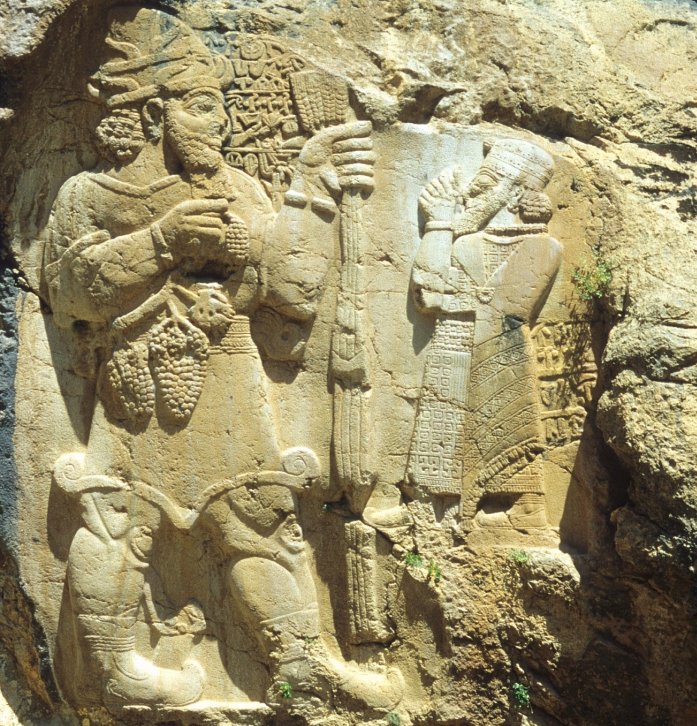Ivriz Relief: 3,000-Year-Old Hittite Relief – Oldest Known Symbol Of Agricultural Fertility In History
Conny Waters - AncientPages.com - The Ivriz relief is a Hittite rock relief in south-central Anatolia, located in the town of Aydinkent (Konya), formerly called Ivriz (modern Turkey).
The 3,000-year-old relief - the Hittite symbol that represented agricultural fertility - is on a rock face near the source of the Ivriz Suyu, whose water largely damaged it, with the passage of time.
Ivriz Relief: King Warpalawas (right) before the god Tarhunzas. source
This ancient Hittite piece of art measures 4.2 m high by 2.4 m wide and depicts the late 8th-century BC king Warpalawas of Tuwana (ca 730-710 BC?) Late Hittite (or Neo-Hittite) king ) who stands on a stone platform with his hands raised in a gesture of greeting or worship.
He is accompanied by the storm-god Tarhunzas (on the left)and is accompanied by a hieroglyphic Luwian inscription, which was first discovered during the 19th century and was defined as Hittite.
Ripe ears of corn and grape clusters (the symbol of the fertile lands of Konya) in his hands indicate that he brings about fertility. A sickle at his hip on the other hand, symbolizes the time immediately before the harvest. In front of the god's face and behind the king's back are three lines of inscription in Luwian hieroglyphs, naming both figures.
Another inscription at the base of the rock-face was probably two lines long, but it is largely damaged.
Mentioned by several literary sources centuries ago, the relief was built in the late Hittite period.
According to professor Hasan Bahar from Selçuk University, Konya Basin, which is surrounded by Hittite monuments, it was an important location for the Hittites as they heavily relied on wheat, and Konya was in a way their 'wheat silo.
In 1986, two valuable discoveries were made in form of a fragment of a stele of Tarhunzas, with a bilingual inscription in Luwian hieroglyphs and Phoenician saying that it was erected by the king Warpalawas and part of the head of a large statue, which probably also depicted Tarhunzas.
The finds led archaeologists to believe that place was a wealthy sanctuary of the storm-god Tarhunzas patronized by Warpalawas. Also another relief, approximately the same size, which appears to be a replication of the İvriz relief, was discovered in the mountain at Ambar Deresi, in the ruins of a Byzantine abbey, near Kizlar Sarayi. This relief is less detailed, has no inscription and probably was never finished.
Written by Conny Waters - AncientPages.com Staff Writer
Expand for referencesReferences:
Darke D. Eastern Turkey
Selim Kapur, Erhan Akça, Hikmet Günal,The Soils of Turkey
More From Ancient Pages
-
 Glass Technology Was Known In Sahara Centuries Before The Arrival Of Europeans
Ancient Technology | Jan 20, 2018
Glass Technology Was Known In Sahara Centuries Before The Arrival Of Europeans
Ancient Technology | Jan 20, 2018 -
 On This Day In History: Battle Of Lihula Between Swedish And Estonian Armies Was Fought – On August 8, 1220
News | Aug 8, 2016
On This Day In History: Battle Of Lihula Between Swedish And Estonian Armies Was Fought – On August 8, 1220
News | Aug 8, 2016 -
 Archaeological Evidence Ancient Egyptians Visited South America
Ancient Mysteries | Jan 7, 2020
Archaeological Evidence Ancient Egyptians Visited South America
Ancient Mysteries | Jan 7, 2020 -
 North America’s New Snake Species Deepen Our Understanding Of Reptile Social Behavior And Development
Evolution | Aug 2, 2024
North America’s New Snake Species Deepen Our Understanding Of Reptile Social Behavior And Development
Evolution | Aug 2, 2024 -
 Ancient Secrets Of Rare Maps Of Judah Ben Zara Revealed
Artifacts | Sep 20, 2022
Ancient Secrets Of Rare Maps Of Judah Ben Zara Revealed
Artifacts | Sep 20, 2022 -
 Hidden Bronze and Iron Treasures Found In Prehistoric Hillfort In Northeast Hungary
Archaeology | Oct 9, 2024
Hidden Bronze and Iron Treasures Found In Prehistoric Hillfort In Northeast Hungary
Archaeology | Oct 9, 2024 -
 The Aztec Sun Stone And Medusa Reveal An Intriguing Connection – Surprising Discovery – Part 1
Ancient Mysteries | Jul 30, 2018
The Aztec Sun Stone And Medusa Reveal An Intriguing Connection – Surprising Discovery – Part 1
Ancient Mysteries | Jul 30, 2018 -
 Lady Midday – ‘Poludnica’- An Evil, Elusive Female Field-Spirit In Slavic Beliefs That Comes To Kill At Noon
Featured Stories | Jan 7, 2019
Lady Midday – ‘Poludnica’- An Evil, Elusive Female Field-Spirit In Slavic Beliefs That Comes To Kill At Noon
Featured Stories | Jan 7, 2019 -
 Norwegian Vikings Were Much More Violent Than Their Danish Counterparts, New Study Reveals
Vikings | Aug 29, 2024
Norwegian Vikings Were Much More Violent Than Their Danish Counterparts, New Study Reveals
Vikings | Aug 29, 2024 -
 Operation Nightingale – Veterans Uncover Impressive 2,000-Year-Old Celtic Treasure
Archaeology | Feb 21, 2025
Operation Nightingale – Veterans Uncover Impressive 2,000-Year-Old Celtic Treasure
Archaeology | Feb 21, 2025 -
 5 Traces Of Ancient Ancestors That Still Exist In All Human Bodies Today
Featured Stories | Jan 23, 2023
5 Traces Of Ancient Ancestors That Still Exist In All Human Bodies Today
Featured Stories | Jan 23, 2023 -
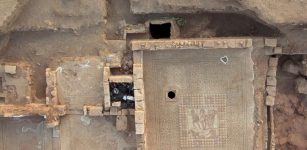 1,700-Year-Old Roman Villa, Beautiful Mosaics, Coins Unearthed In Ancient Roman Port Of Ptolemais
Archaeology | Jun 12, 2017
1,700-Year-Old Roman Villa, Beautiful Mosaics, Coins Unearthed In Ancient Roman Port Of Ptolemais
Archaeology | Jun 12, 2017 -
 The Name Vatican And Etruscan Goddess Vatika Of The Underworld – What Is The Connection?
Featured Stories | Jun 6, 2020
The Name Vatican And Etruscan Goddess Vatika Of The Underworld – What Is The Connection?
Featured Stories | Jun 6, 2020 -
 The Colored Skeletons Of 9000-Year-Old Çatalhöyük (Catalhoyuk), Turkey – New Examination
Archaeology | Mar 18, 2022
The Colored Skeletons Of 9000-Year-Old Çatalhöyük (Catalhoyuk), Turkey – New Examination
Archaeology | Mar 18, 2022 -
 Rhodogune Of Parthia Refused To Bath And Comb Her Hair Until She Subdued The Rebels
Featured Stories | Oct 7, 2019
Rhodogune Of Parthia Refused To Bath And Comb Her Hair Until She Subdued The Rebels
Featured Stories | Oct 7, 2019 -
 Ancient Roman Wine Was Spicy And Smelled Like Toast – Dolia Vessels Reveal
Archaeology | Jan 25, 2024
Ancient Roman Wine Was Spicy And Smelled Like Toast – Dolia Vessels Reveal
Archaeology | Jan 25, 2024 -
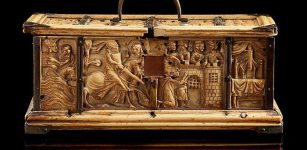 Extremely Rare 700-Year-Old French Gothic Ivory Casket At Risk Of Leaving The UK
Archaeology | Dec 7, 2022
Extremely Rare 700-Year-Old French Gothic Ivory Casket At Risk Of Leaving The UK
Archaeology | Dec 7, 2022 -
 Why Is Caganer, The Pooping Man Part Of The Catalonian Christmas Tradition And Nativity Scene?
Christmas Traditions | Dec 18, 2024
Why Is Caganer, The Pooping Man Part Of The Catalonian Christmas Tradition And Nativity Scene?
Christmas Traditions | Dec 18, 2024 -
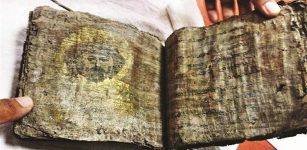 A Millennium-Old Gilded Bible Seized In Tokat, Turkey
Archaeology | Oct 28, 2015
A Millennium-Old Gilded Bible Seized In Tokat, Turkey
Archaeology | Oct 28, 2015 -
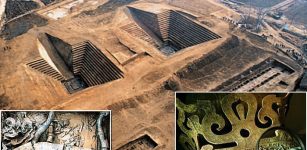 Mysterious Lost Civilization Of Chu And Its Powerful Kingdom
Civilizations | Nov 29, 2018
Mysterious Lost Civilization Of Chu And Its Powerful Kingdom
Civilizations | Nov 29, 2018

